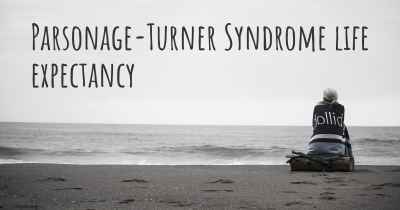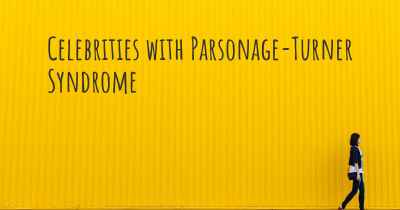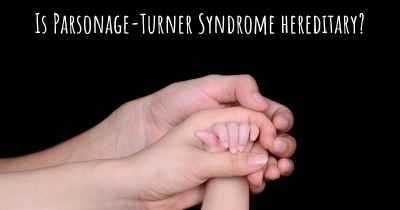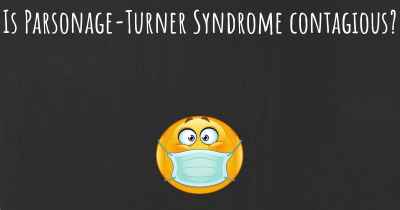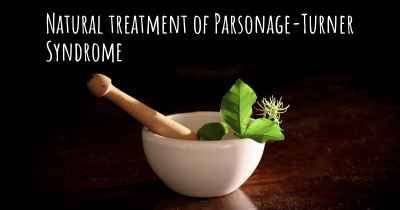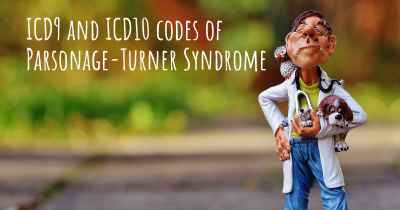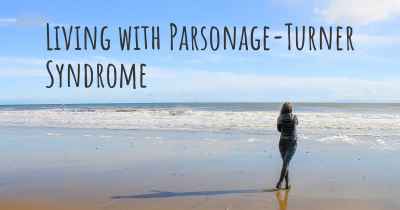How is Parsonage-Turner Syndrome diagnosed?
See how Parsonage-Turner Syndrome is diagnosed. Which specialists are essential to meet, what tests are needed and other useful information for the diagnosis of Parsonage-Turner Syndrome

Diagnosis of Parsonage-Turner Syndrome
Parsonage-Turner Syndrome (PTS), also known as brachial neuritis or neuralgic amyotrophy, is a rare neurological condition characterized by sudden and severe shoulder pain followed by weakness and atrophy of the affected muscles. Diagnosing PTS can be challenging due to its similarity to other shoulder conditions, but a combination of clinical evaluation, medical history, and diagnostic tests can help confirm the diagnosis.
Clinical Evaluation
The first step in diagnosing PTS involves a thorough clinical evaluation by a healthcare professional, typically a neurologist or orthopedic specialist. The healthcare provider will begin by taking a detailed medical history, including any recent illnesses, injuries, or surgeries that may have preceded the onset of symptoms. They will also inquire about the nature and location of the pain, as well as any associated symptoms such as weakness or numbness.
During the physical examination, the healthcare provider will carefully assess the affected shoulder and arm, looking for signs of muscle weakness, atrophy, and decreased range of motion. They may also perform specific tests to evaluate the strength and function of the muscles and nerves in the affected area.
Electrodiagnostic Tests
Electrodiagnostic tests play a crucial role in confirming the diagnosis of PTS. These tests help evaluate the electrical activity and function of the muscles and nerves. The two most commonly used tests for diagnosing PTS are electromyography (EMG) and nerve conduction studies (NCS).
EMG: During an EMG, a thin needle electrode is inserted into the affected muscles to measure their electrical activity at rest and during contraction. In PTS, the EMG may reveal abnormal spontaneous activity, such as fibrillation potentials or positive sharp waves, indicating denervation of the muscles.
NCS: Nerve conduction studies involve the application of small electrical shocks to the nerves to assess their conduction velocity and integrity. In PTS, NCS may show abnormalities, such as reduced nerve conduction velocity or prolonged distal latencies, suggesting nerve damage or inflammation.
Imaging Studies
Imaging studies are often used to rule out other potential causes of shoulder pain and weakness and to visualize the affected structures. While imaging alone cannot confirm the diagnosis of PTS, it can provide valuable information to support the clinical findings.
Magnetic Resonance Imaging (MRI): MRI is a non-invasive imaging technique that uses powerful magnets and radio waves to create detailed images of the soft tissues in the body. It can help identify any structural abnormalities, such as muscle inflammation or nerve compression, which may contribute to the symptoms.
Ultrasound: Ultrasound imaging uses high-frequency sound waves to produce real-time images of the internal structures. It can help visualize the muscles, tendons, and nerves in the shoulder region and may reveal signs of inflammation or muscle atrophy.
Other Tests
In some cases, additional tests may be ordered to rule out other conditions or to further support the diagnosis of PTS.
Blood tests: Blood tests may be performed to check for markers of inflammation or to rule out other systemic conditions that can cause similar symptoms.
Genetic testing: In rare cases, genetic testing may be recommended to identify any underlying genetic abnormalities associated with PTS.
Conclusion
Diagnosing Parsonage-Turner Syndrome requires a comprehensive approach that combines clinical evaluation, medical history, and various diagnostic tests. The clinical evaluation helps assess the physical symptoms and signs, while electrodiagnostic tests, such as EMG and NCS, provide objective evidence of nerve and muscle involvement. Imaging studies, such as MRI and ultrasound, can help visualize the affected structures and rule out other potential causes. Additional tests, such as blood tests or genetic testing, may be ordered to support the diagnosis or exclude other conditions. If you suspect you may have Parsonage-Turner Syndrome, it is important to consult with a healthcare professional for a proper evaluation and diagnosis.
Posted Oct 8, 2017 by Lorene 900
Posted Apr 19, 2018 by Donna 2500
Posted Jul 23, 2018 by Chinchay 600
